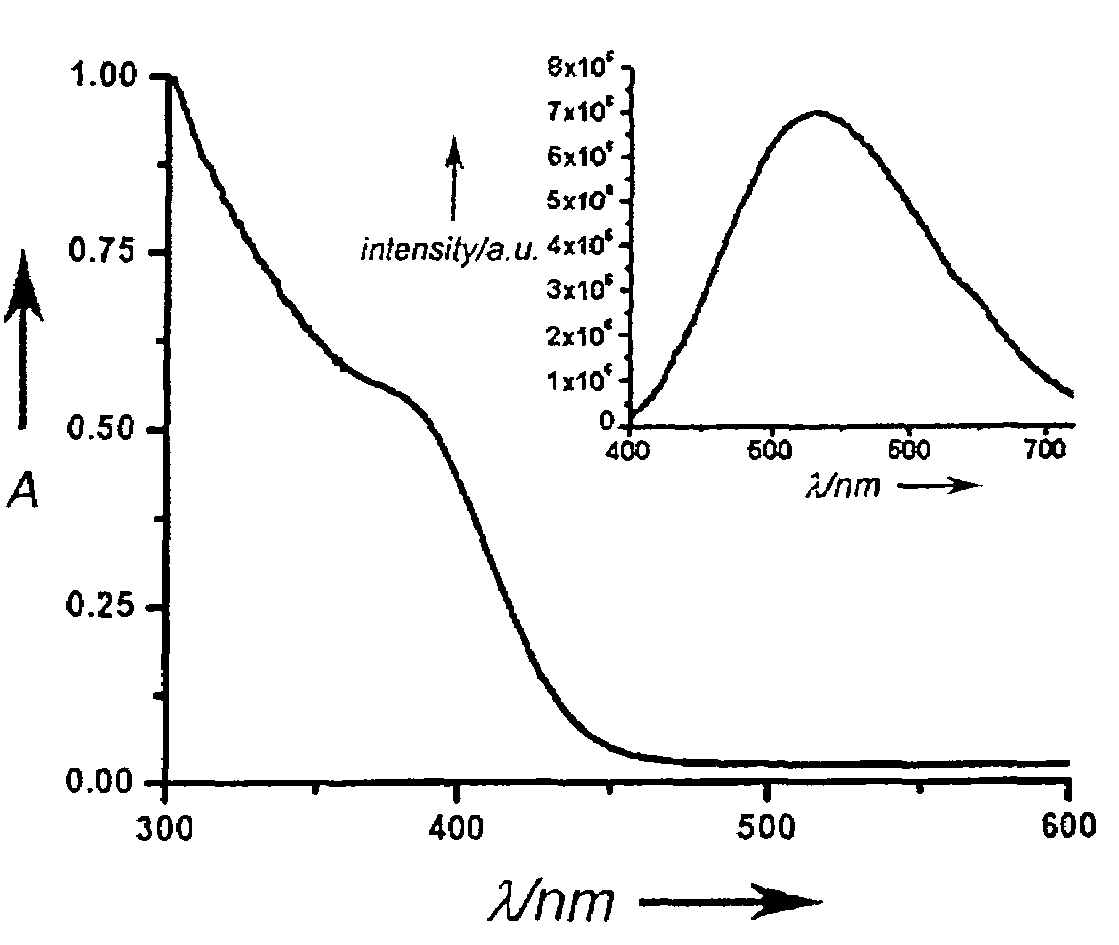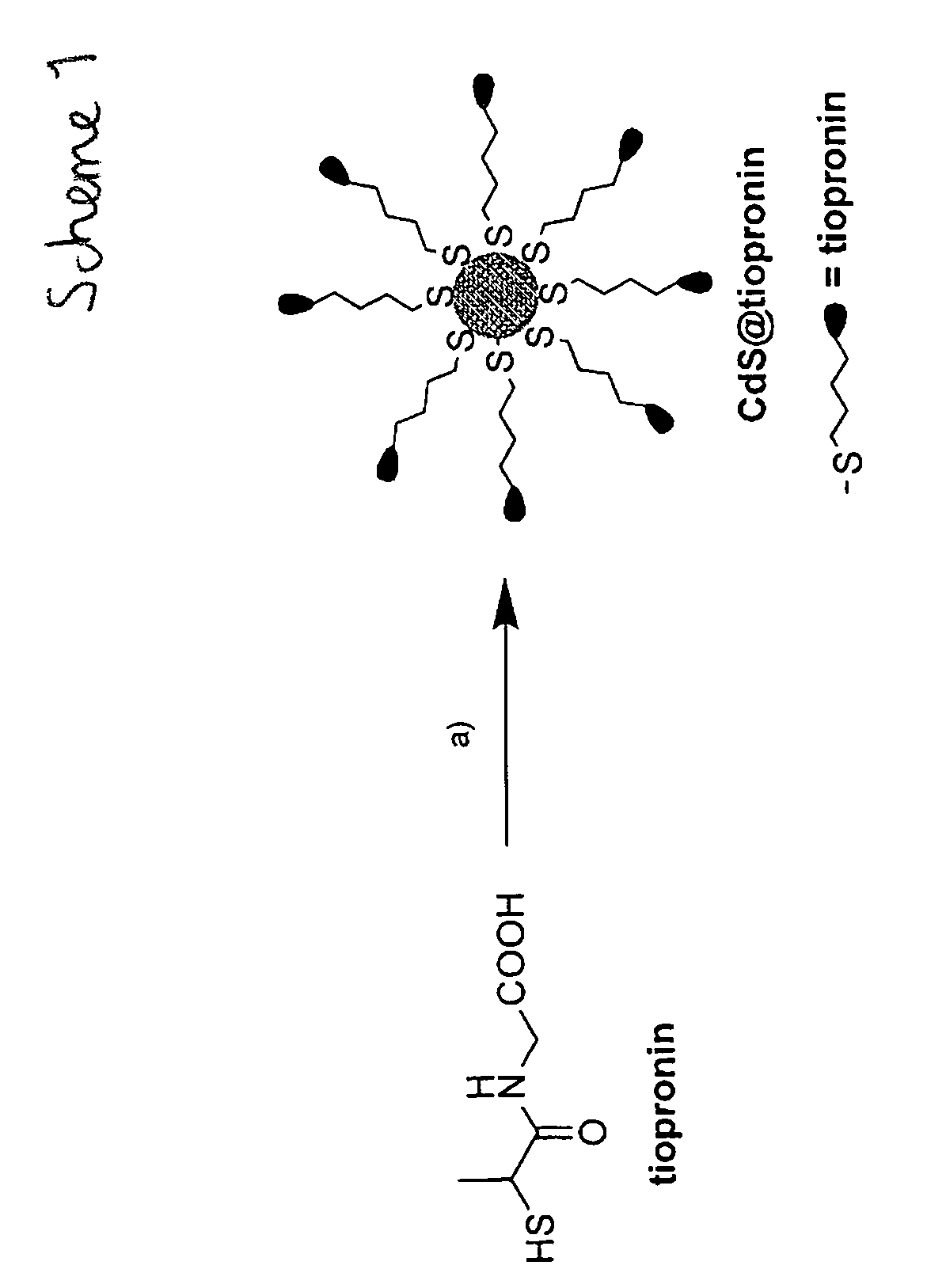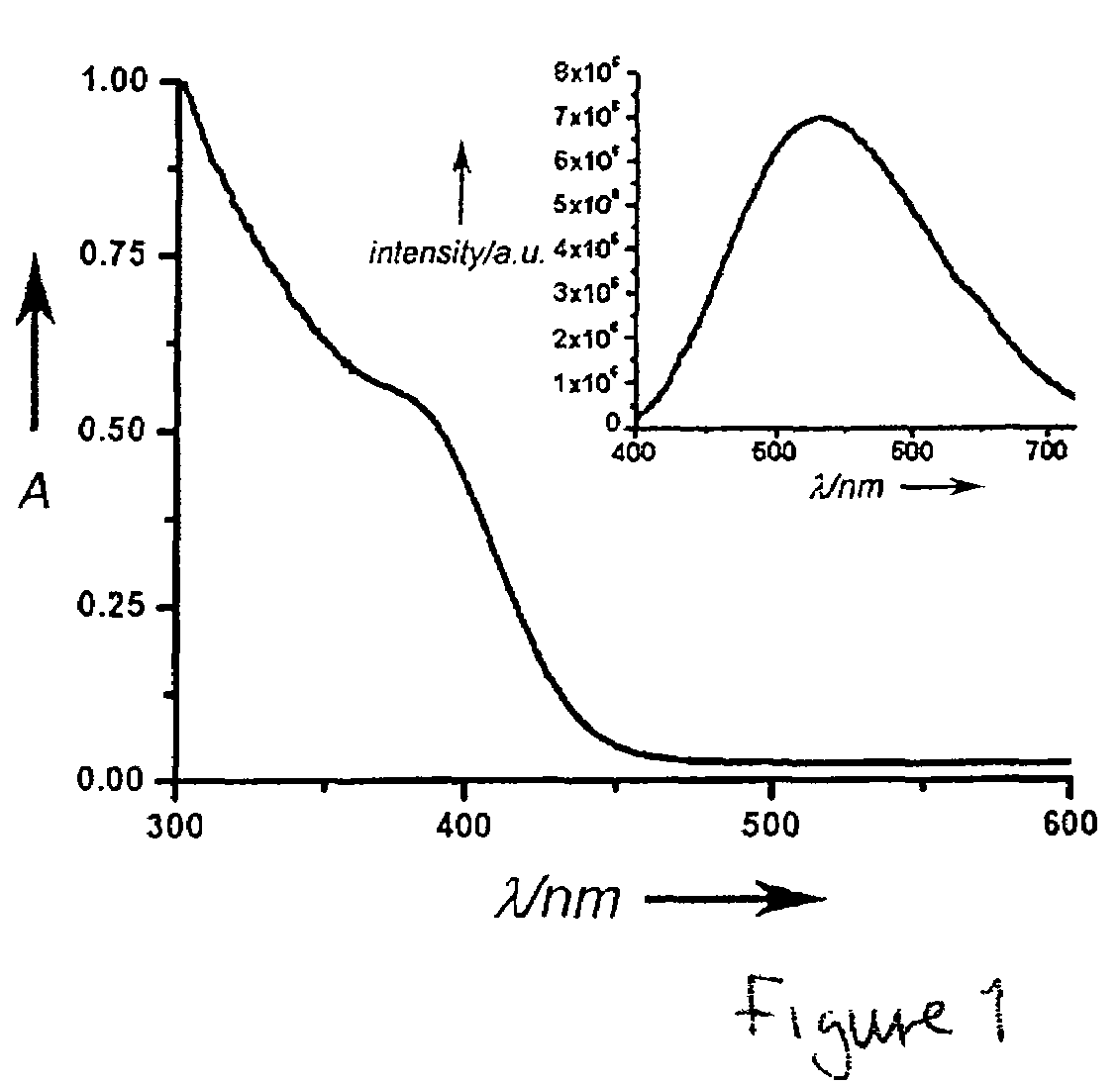Quantum dots and their uses
a technology of quantum dots and dots, applied in the field of quantum dots, can solve the problem that quantum dots were insufficiently stable to be used in biological labelling reactions
- Summary
- Abstract
- Description
- Claims
- Application Information
AI Technical Summary
Benefits of technology
Problems solved by technology
Method used
Image
Examples
examples
Preparation of CdS@tiopronin
[0058]Cadmium nitrate tetrahydrate (200 mg, 0.6 mmol, 1 eq) and N-(2-mercatopropionyl)glycine) (140 mg, 0.9 mmol, 1.3 eq) were dissolved in previously degassed water (25 mL). The pH of this solution was adjusted to 10 with 1 M NaOHaq. After adding dropwise a solution of sodium sulphide (0.05 mg, 0.6 mmol, 1 eq) in degassed water (1 mL), the mixture was stirred for 20 min. The crude CdS@tiopronin was water-soluble. The yellow product was purified by precipitation out of EtOH and lyophilized (168 mg). IR (KBr): ν=3436, 2921, 2855, 1625, 1386, 1297, 1260, 1019 cm−1; 1H-NMR (400 MHz, D2O): δ=4.70; (s, 2H, CH2), 3.64; (m, 1H, S—CH), 1.32; (d, 3H, CH3, J=7.0 Hz); UV / Vis (H2O): ν=380 nm; Fluorescence (H2O), λexc=380 nm, λem=540 nm.
Preparation of CdS@tiopronin-Tat
[0059]CdS@tiopronin (2.5 mg), (N-(3-dimethylaminopropyl)-N′-ethylcarbodiimide hydrochloride (EDC) (0.20 mg, 1 μmol) and N-Hydroxysuccinimide (NHS) (0.3 mg, 2.3 μmol) were dissolved in previously degassed...
PUM
| Property | Measurement | Unit |
|---|---|---|
| wavelength | aaaaa | aaaaa |
| wavelength | aaaaa | aaaaa |
| excitation wavelength | aaaaa | aaaaa |
Abstract
Description
Claims
Application Information
 Login to View More
Login to View More - R&D
- Intellectual Property
- Life Sciences
- Materials
- Tech Scout
- Unparalleled Data Quality
- Higher Quality Content
- 60% Fewer Hallucinations
Browse by: Latest US Patents, China's latest patents, Technical Efficacy Thesaurus, Application Domain, Technology Topic, Popular Technical Reports.
© 2025 PatSnap. All rights reserved.Legal|Privacy policy|Modern Slavery Act Transparency Statement|Sitemap|About US| Contact US: help@patsnap.com



